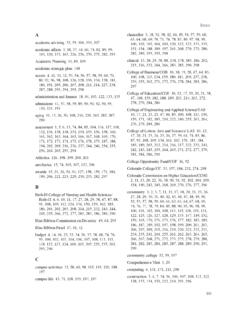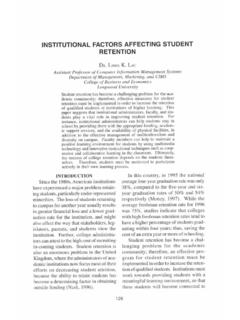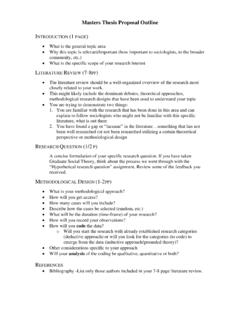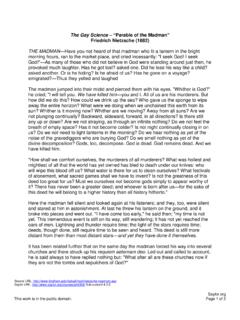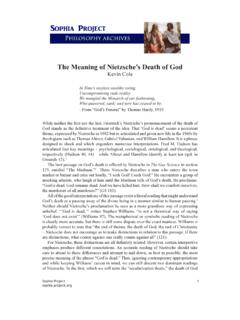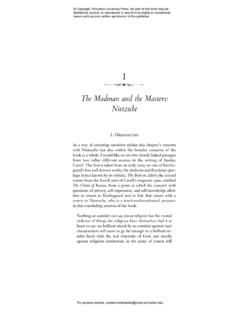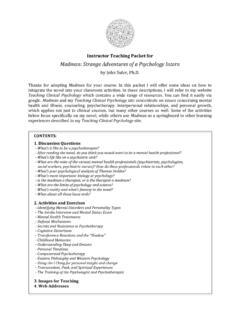Transcription of Understanding Madmen: A DSM-IV Assessment of Adolf Hitler
1 Individual Differences Research 2007, Vol. 5, No. 1 ISSN: 1541-745X pp. 30-43 Copyright 2007 IDR Understanding madmen : A DSM-IV Assessment of Adolf Hitler Frederick L. Coolidge*, Felicia L. Davis, & Daniel L. Segal University of Colorado at Colorado Springs *Frederick L. Coolidge, PhD; Psychology Department; P. O. Box 7150; University of Colorado at Colorado Springs; Colorado Springs, CO 80933-7150; (email).
2 ABSTRACT - Adolf Hitler s personality was investigated posthumously through the use of an informant version of the Coolidge Axis II Inventory (CATI), which is designed for the Assessment of personality, clinical, and neuropsychological disorders. Five academic Hitler historians completed the CATI. The overall mean inter-rater correlation was moderately high for all 38 CATI scales T scores (median r = .72). On Axis I, the highest mean T scores across raters were Posttraumatic Stress Disorder (76), Psychotic Thinking (73) and Schizophrenia (69).
3 On Axis II, the highest mean T scores were Paranoid Personality Disorder (78), Antisocial Personality Disorder (78), Narcissistic Personality Disorder (77), and Sadistic Personality Disorder (76). Results of the present study support the reliability and preliminary validity of informant reports for psychological investigations of historical or contemporary figures. The name Adolf Hitler conjures-up images of a madman in power, Nazi concentration camps in Germany and Europe, and an evil of such magnitude that millions of Jewish people and others were subjected to unimaginable torture, terror and death.
4 The present study attempts to evaluate posthumously Adolf Hitler s personality according to the current Diagnostic and Statistical Manual of Mental Disorders (American Psychiatric Association, 2000). Tolerance and enlightened acceptance of various peoples has been heralded as one of the major accomplishments of modern societies in the last 50 years. With this advancement, it has often been taken for granted that a leader of Hitlerian proportion could never again attain such power and influence.
5 However, we know now that there are many who threaten world peace and stability. It is hoped that this study of Adolf Hitler s personality (1) will be useful in Understanding the role psychopathology might play in the execution of heinous acts, and (2) will establish the reliability of the informant method in the diagnosis of psychopathology. It is important to note at the outset that regardless of any inferred DSM-IV psychopathology, explanation does not equal exculpation: The present study is not intended to excuse Hitler s actions or make him any less morally culpable.
6 There have been many different and highly contentious theories attempting to understand Hitler and the Holocaust. The most common approach centers Hitler firmly as the cause of the Holocaust. This approach is epitomized by Himmelfarb s (1984) famous essay, No Hitler , no Holocaust. Himmelfarb viewed Hitler as an evil genius who started the Holocaust because of his personal will and desire to Coolidge et al. / Individual Differences Research, 2007, Vol. 5, No. 1, pp.
7 30-43 31 exterminate Jews. Yet within this approach, opinions run the gamut from attributing Hitler s behavior to his psychopathology to stating firmly that Hitler was inexplicably evil. One of the first published reports of Hitler s personality was by Carl Jung in 1939 (McGuire & Hull, 1977). In the late 1930s, Jung met and observed Hitler and Italian dictator Mussolini interact in Berlin. Jung noted that Mussolini appeared to be an original man who had warmth and energy, where as Jung said Hitler inspired in him only fear.
8 During their interaction, Jung said Hitler never laughed, and it appeared as if Hitler was in a bad humor, sulking. Jung viewed him as sexless and inhuman, with a singleness of purpose: to establish the Third Reich, a mystical, all-powerful German nation, which would overcome all of Hitler s perceived threats and previous insults in Germany s history. Langer (1943/1972) provided a psychoanalytic evaluation of Hitler during WWII for the Office of Strategic Services. Using sources only available up until 1943, Langer diagnosed Hitler as a neurotic bordering on psychotic with a messiah complex, masochistic tendencies, strong sexual perversions, and a high likelihood of homosexuality.
9 He also stated that Hitler had many schizophrenic tendencies and that the most plausible outcome for Hitler would be that he would commit suicide. Langer s views heralded later ideas that Hitler s primary later adult motivations may have been formed when he was hospitalized (at the age of 29) in 1918 at Pasewalk hospital in Pomerania (Germany) while serving in WWI on the Russian front. Hitler , and the troops he served with, were attacked with mustard gas. For many theorists, Pasewalk is a seminal event in the development of Hitler s anti-Semitism and for the formation of his psychopathology.
10 In Mein Kampf (which most scholars agree cannot be taken as completely factual), Hitler (1925/1999) reports that on the evening of October 13, 1918, gas shells rained on them all night more or less violently. As early as midnight, a number of us passed out, a few of our comrades forever. Toward morning I, too, was seized with pain which grew worse with every quarter hour, and at seven in the morning I stumbled and tottered back with burning eyes; taking with me my last report of the war. A few hours later, my eyes had turned into glowing coals; it had grown dark around me (p.)

